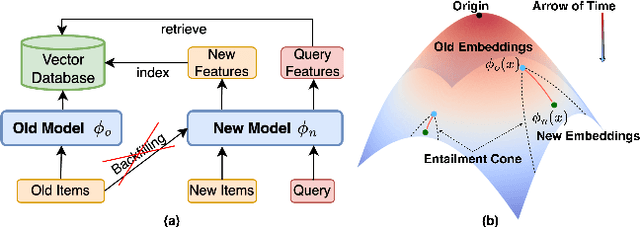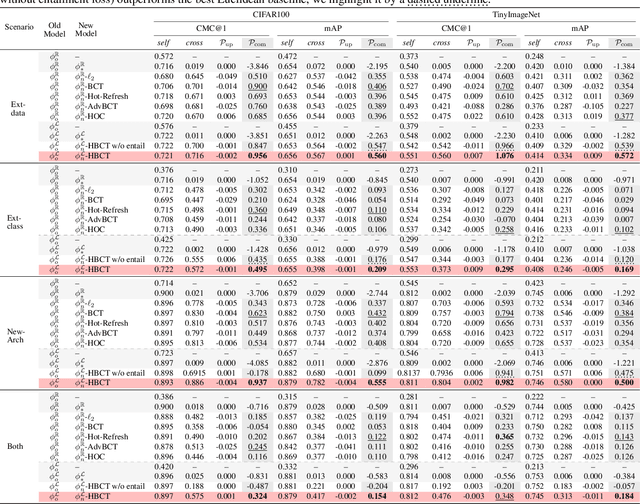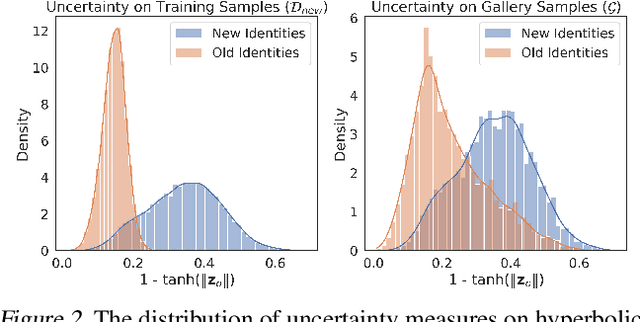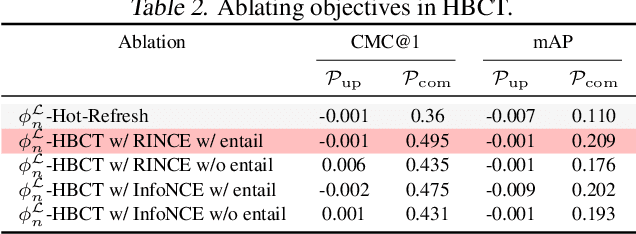Neil Shah
Generative Recommendation with Semantic IDs: A Practitioner's Handbook
Jul 29, 2025Abstract:Generative recommendation (GR) has gained increasing attention for its promising performance compared to traditional models. A key factor contributing to the success of GR is the semantic ID (SID), which converts continuous semantic representations (e.g., from large language models) into discrete ID sequences. This enables GR models with SIDs to both incorporate semantic information and learn collaborative filtering signals, while retaining the benefits of discrete decoding. However, varied modeling techniques, hyper-parameters, and experimental setups in existing literature make direct comparisons between GR proposals challenging. Furthermore, the absence of an open-source, unified framework hinders systematic benchmarking and extension, slowing model iteration. To address this challenge, our work introduces and open-sources a framework for Generative Recommendation with semantic ID, namely GRID, specifically designed for modularity to facilitate easy component swapping and accelerate idea iteration. Using GRID, we systematically experiment with and ablate different components of GR models with SIDs on public benchmarks. Our comprehensive experiments with GRID reveal that many overlooked architectural components in GR models with SIDs substantially impact performance. This offers both novel insights and validates the utility of an open-source platform for robust benchmarking and GR research advancement. GRID is open-sourced at https://github.com/snap-research/GRID.
Learning Along the Arrow of Time: Hyperbolic Geometry for Backward-Compatible Representation Learning
Jun 06, 2025



Abstract:Backward compatible representation learning enables updated models to integrate seamlessly with existing ones, avoiding to reprocess stored data. Despite recent advances, existing compatibility approaches in Euclidean space neglect the uncertainty in the old embedding model and force the new model to reconstruct outdated representations regardless of their quality, thereby hindering the learning process of the new model. In this paper, we propose to switch perspectives to hyperbolic geometry, where we treat time as a natural axis for capturing a model's confidence and evolution. By lifting embeddings into hyperbolic space and constraining updated embeddings to lie within the entailment cone of the old ones, we maintain generational consistency across models while accounting for uncertainties in the representations. To further enhance compatibility, we introduce a robust contrastive alignment loss that dynamically adjusts alignment weights based on the uncertainty of the old embeddings. Experiments validate the superiority of the proposed method in achieving compatibility, paving the way for more resilient and adaptable machine learning systems.
Revisiting Self-attention for Cross-domain Sequential Recommendation
May 27, 2025Abstract:Sequential recommendation is a popular paradigm in modern recommender systems. In particular, one challenging problem in this space is cross-domain sequential recommendation (CDSR), which aims to predict future behaviors given user interactions across multiple domains. Existing CDSR frameworks are mostly built on the self-attention transformer and seek to improve by explicitly injecting additional domain-specific components (e.g. domain-aware module blocks). While these additional components help, we argue they overlook the core self-attention module already present in the transformer, a naturally powerful tool to learn correlations among behaviors. In this work, we aim to improve the CDSR performance for simple models from a novel perspective of enhancing the self-attention. Specifically, we introduce a Pareto-optimal self-attention and formulate the cross-domain learning as a multi-objective problem, where we optimize the recommendation task while dynamically minimizing the cross-domain attention scores. Our approach automates knowledge transfer in CDSR (dubbed as AutoCDSR) -- it not only mitigates negative transfer but also encourages complementary knowledge exchange among auxiliary domains. Based on the idea, we further introduce AutoCDSR+, a more performant variant with slight additional cost. Our proposal is easy to implement and works as a plug-and-play module that can be incorporated into existing transformer-based recommenders. Besides flexibility, it is practical to deploy because it brings little extra computational overheads without heavy hyper-parameter tuning. AutoCDSR on average improves Recall@10 for SASRec and Bert4Rec by 9.8% and 16.0% and NDCG@10 by 12.0% and 16.7%, respectively. Code is available at https://github.com/snap-research/AutoCDSR.
On the Role of Weight Decay in Collaborative Filtering: A Popularity Perspective
May 16, 2025Abstract:Collaborative filtering (CF) enables large-scale recommendation systems by encoding information from historical user-item interactions into dense ID-embedding tables. However, as embedding tables grow, closed-form solutions become impractical, often necessitating the use of mini-batch gradient descent for training. Despite extensive work on designing loss functions to train CF models, we argue that one core component of these pipelines is heavily overlooked: weight decay. Attaining high-performing models typically requires careful tuning of weight decay, regardless of loss, yet its necessity is not well understood. In this work, we question why weight decay is crucial in CF pipelines and how it impacts training. Through theoretical and empirical analysis, we surprisingly uncover that weight decay's primary function is to encode popularity information into the magnitudes of the embedding vectors. Moreover, we find that tuning weight decay acts as a coarse, non-linear knob to influence preference towards popular or unpopular items. Based on these findings, we propose PRISM (Popularity-awaRe Initialization Strategy for embedding Magnitudes), a straightforward yet effective solution to simplify the training of high-performing CF models. PRISM pre-encodes the popularity information typically learned through weight decay, eliminating its necessity. Our experiments show that PRISM improves performance by up to 4.77% and reduces training times by 38.48%, compared to state-of-the-art training strategies. Additionally, we parameterize PRISM to modulate the initialization strength, offering a cost-effective and meaningful strategy to mitigate popularity bias.
Learning Universal User Representations Leveraging Cross-domain User Intent at Snapchat
Apr 30, 2025Abstract:The development of powerful user representations is a key factor in the success of recommender systems (RecSys). Online platforms employ a range of RecSys techniques to personalize user experience across diverse in-app surfaces. User representations are often learned individually through user's historical interactions within each surface and user representations across different surfaces can be shared post-hoc as auxiliary features or additional retrieval sources. While effective, such schemes cannot directly encode collaborative filtering signals across different surfaces, hindering its capacity to discover complex relationships between user behaviors and preferences across the whole platform. To bridge this gap at Snapchat, we seek to conduct universal user modeling (UUM) across different in-app surfaces, learning general-purpose user representations which encode behaviors across surfaces. Instead of replacing domain-specific representations, UUM representations capture cross-domain trends, enriching existing representations with complementary information. This work discusses our efforts in developing initial UUM versions, practical challenges, technical choices and modeling and research directions with promising offline performance. Following successful A/B testing, UUM representations have been launched in production, powering multiple use cases and demonstrating their value. UUM embedding has been incorporated into (i) Long-form Video embedding-based retrieval, leading to 2.78% increase in Long-form Video Open Rate, (ii) Long-form Video L2 ranking, with 19.2% increase in Long-form Video View Time sum, (iii) Lens L2 ranking, leading to 1.76% increase in Lens play time, and (iv) Notification L2 ranking, with 0.87% increase in Notification Open Rate.
Heuristic Methods are Good Teachers to Distill MLPs for Graph Link Prediction
Apr 08, 2025



Abstract:Link prediction is a crucial graph-learning task with applications including citation prediction and product recommendation. Distilling Graph Neural Networks (GNNs) teachers into Multi-Layer Perceptrons (MLPs) students has emerged as an effective approach to achieve strong performance and reducing computational cost by removing graph dependency. However, existing distillation methods only use standard GNNs and overlook alternative teachers such as specialized model for link prediction (GNN4LP) and heuristic methods (e.g., common neighbors). This paper first explores the impact of different teachers in GNN-to-MLP distillation. Surprisingly, we find that stronger teachers do not always produce stronger students: MLPs distilled from GNN4LP can underperform those distilled from simpler GNNs, while weaker heuristic methods can teach MLPs to near-GNN performance with drastically reduced training costs. Building on these insights, we propose Ensemble Heuristic-Distilled MLPs (EHDM), which eliminates graph dependencies while effectively integrating complementary signals via a gating mechanism. Experiments on ten datasets show an average 7.93% improvement over previous GNN-to-MLP approaches with 1.95-3.32 times less training time, indicating EHDM is an efficient and effective link prediction method.
Beyond Unimodal Boundaries: Generative Recommendation with Multimodal Semantics
Mar 30, 2025Abstract:Generative recommendation (GR) has become a powerful paradigm in recommendation systems that implicitly links modality and semantics to item representation, in contrast to previous methods that relied on non-semantic item identifiers in autoregressive models. However, previous research has predominantly treated modalities in isolation, typically assuming item content is unimodal (usually text). We argue that this is a significant limitation given the rich, multimodal nature of real-world data and the potential sensitivity of GR models to modality choices and usage. Our work aims to explore the critical problem of Multimodal Generative Recommendation (MGR), highlighting the importance of modality choices in GR nframeworks. We reveal that GR models are particularly sensitive to different modalities and examine the challenges in achieving effective GR when multiple modalities are available. By evaluating design strategies for effectively leveraging multiple modalities, we identify key challenges and introduce MGR-LF++, an enhanced late fusion framework that employs contrastive modality alignment and special tokens to denote different modalities, achieving a performance improvement of over 20% compared to single-modality alternatives.
GiGL: Large-Scale Graph Neural Networks at Snapchat
Feb 20, 2025Abstract:Recent advances in graph machine learning (ML) with the introduction of Graph Neural Networks (GNNs) have led to a widespread interest in applying these approaches to business applications at scale. GNNs enable differentiable end-to-end (E2E) learning of model parameters given graph structure which enables optimization towards popular node, edge (link) and graph-level tasks. While the research innovation in new GNN layers and training strategies has been rapid, industrial adoption and utility of GNNs has lagged considerably due to the unique scale challenges that large-scale graph ML problems create. In this work, we share our approach to training, inference, and utilization of GNNs at Snapchat. To this end, we present GiGL (Gigantic Graph Learning), an open-source library to enable large-scale distributed graph ML to the benefit of researchers, ML engineers, and practitioners. We use GiGL internally at Snapchat to manage the heavy lifting of GNN workflows, including graph data preprocessing from relational DBs, subgraph sampling, distributed training, inference, and orchestration. GiGL is designed to interface cleanly with open-source GNN modeling libraries prominent in academia like PyTorch Geometric (PyG), while handling scaling and productionization challenges that make it easier for internal practitioners to focus on modeling. GiGL is used in multiple production settings, and has powered over 35 launches across multiple business domains in the last 2 years in the contexts of friend recommendation, content recommendation and advertising. This work details high-level design and tools the library provides, scaling properties, case studies in diverse business settings with industry-scale graphs, and several key lessons learned in employing graph ML at scale on large social data. GiGL is open-sourced at https://github.com/snap-research/GiGL.
Retrieval-Augmented Generation with Graphs (GraphRAG)
Jan 08, 2025



Abstract:Retrieval-augmented generation (RAG) is a powerful technique that enhances downstream task execution by retrieving additional information, such as knowledge, skills, and tools from external sources. Graph, by its intrinsic "nodes connected by edges" nature, encodes massive heterogeneous and relational information, making it a golden resource for RAG in tremendous real-world applications. As a result, we have recently witnessed increasing attention on equipping RAG with Graph, i.e., GraphRAG. However, unlike conventional RAG, where the retriever, generator, and external data sources can be uniformly designed in the neural-embedding space, the uniqueness of graph-structured data, such as diverse-formatted and domain-specific relational knowledge, poses unique and significant challenges when designing GraphRAG for different domains. Given the broad applicability, the associated design challenges, and the recent surge in GraphRAG, a systematic and up-to-date survey of its key concepts and techniques is urgently desired. Following this motivation, we present a comprehensive and up-to-date survey on GraphRAG. Our survey first proposes a holistic GraphRAG framework by defining its key components, including query processor, retriever, organizer, generator, and data source. Furthermore, recognizing that graphs in different domains exhibit distinct relational patterns and require dedicated designs, we review GraphRAG techniques uniquely tailored to each domain. Finally, we discuss research challenges and brainstorm directions to inspire cross-disciplinary opportunities. Our survey repository is publicly maintained at https://github.com/Graph-RAG/GraphRAG/.
Advancing NAM-to-Speech Conversion with Novel Methods and the MultiNAM Dataset
Dec 25, 2024Abstract:Current Non-Audible Murmur (NAM)-to-speech techniques rely on voice cloning to simulate ground-truth speech from paired whispers. However, the simulated speech often lacks intelligibility and fails to generalize well across different speakers. To address this issue, we focus on learning phoneme-level alignments from paired whispers and text and employ a Text-to-Speech (TTS) system to simulate the ground-truth. To reduce dependence on whispers, we learn phoneme alignments directly from NAMs, though the quality is constrained by the available training data. To further mitigate reliance on NAM/whisper data for ground-truth simulation, we propose incorporating the lip modality to infer speech and introduce a novel diffusion-based method that leverages recent advancements in lip-to-speech technology. Additionally, we release the MultiNAM dataset with over $7.96$ hours of paired NAM, whisper, video, and text data from two speakers and benchmark all methods on this dataset. Speech samples and the dataset are available at \url{https://diff-nam.github.io/DiffNAM/}
 Add to Chrome
Add to Chrome Add to Firefox
Add to Firefox Add to Edge
Add to Edge